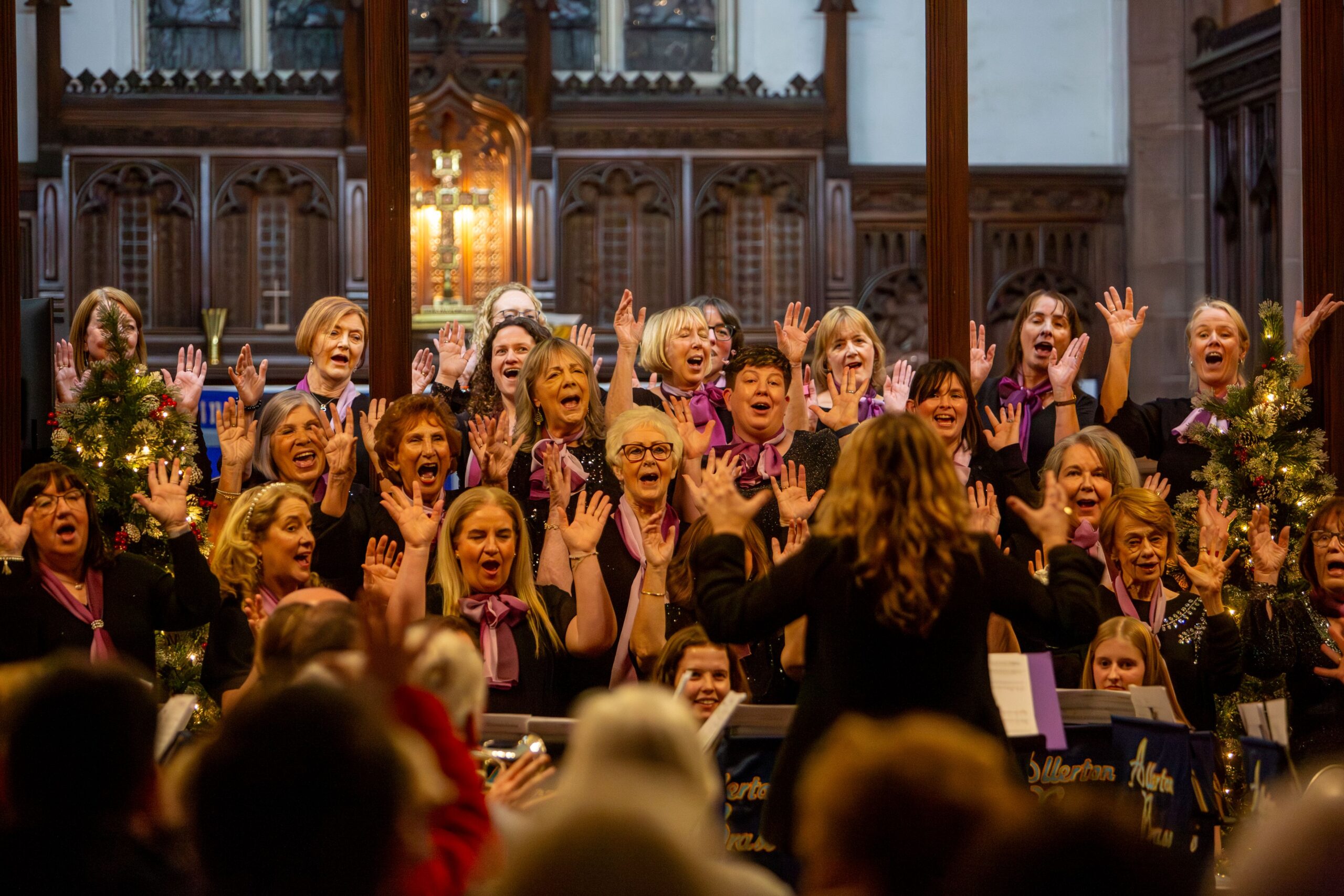
Culture
Pilgrims from Liverpool complete historic walk from Ireland with Bronze Shoes
2 years ago
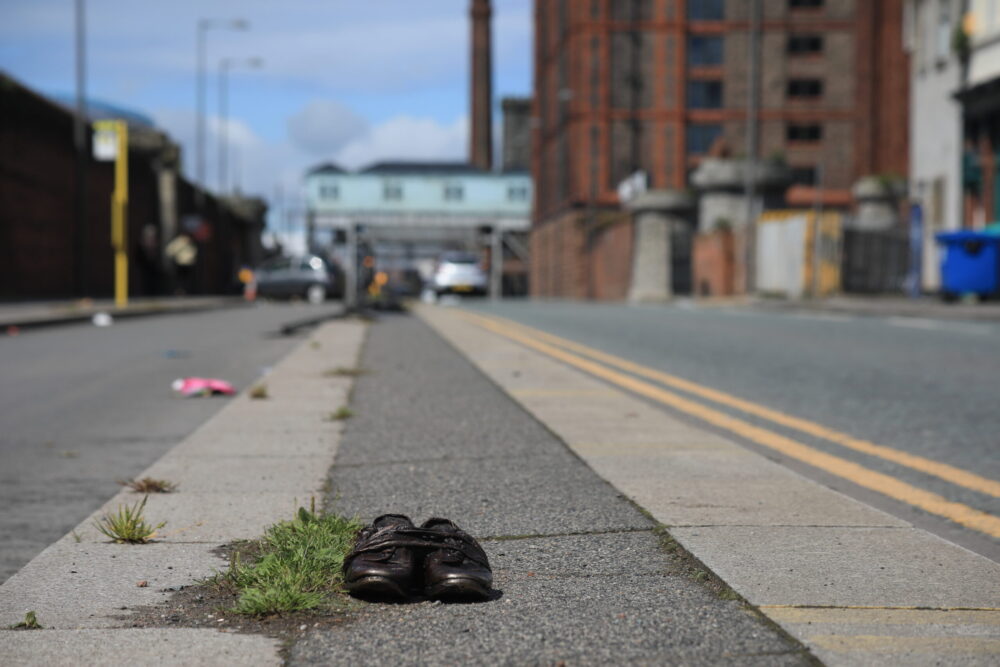
Three Liverpool-based walkers have embarked on a remarkable pilgrimage, transporting a pair of bronze shoes from Strokestown in Co. Roscommon, Ireland, to Liverpool.
John Maguire from ArtsGroupie CIC, Greg Quiery, and Emma Smith of the Liverpool Irish Festival completed the journey in nine days.
They were joined by notable figures such as Dr. Eamonn McKee, the Irish Ambassador to Canada, and Caroilin Callery, daughter of Jim Callery, the founder of Strokestown Park and Museum and The National Famine Way.
The shoes symbolise a reconnection between Ireland’s famine emigrants and the Liverpool Irish Famine Trail, with the Liverpool Irish Festival acting as the custodian of the trail. This initiative preserves and shares the stories of these historic sites for future generations.
At the height of An Gorta Mór (The Great Hunger), 1,490 men, women, and children were forcibly evicted from Strokestown, bound for Canada.
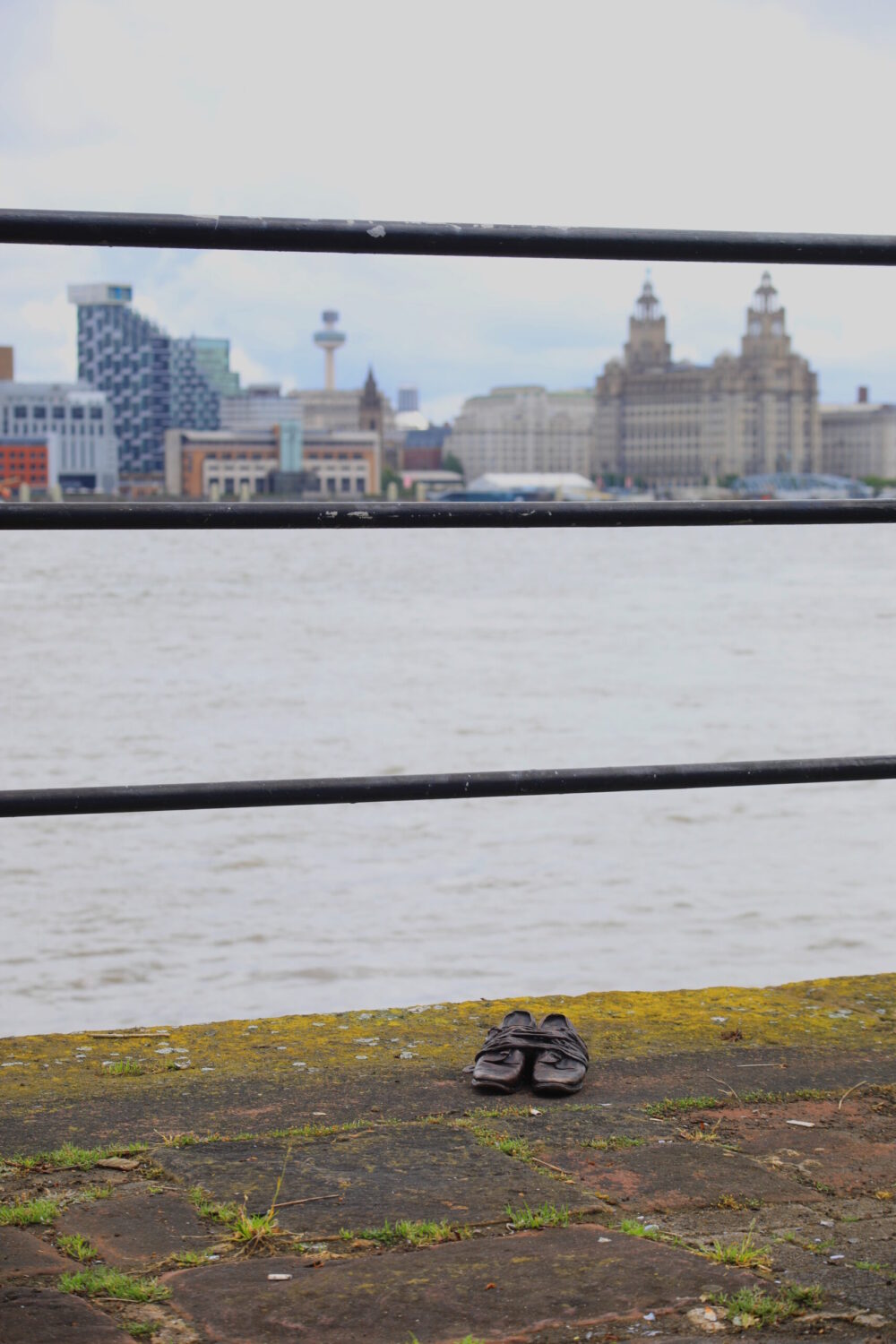
This harrowing journey saw half of them perish along the way. The route they took is now commemorated as The National Famine Way, a collaboration involving Waterways Ireland, the Irish Heritage Trust, and various county councils.
177 years later, individuals from The National Famine Way, Strokestown Park and Museum, and Liverpool’s Irish Famine Trail have retraced the 165 km evictee route.
They walked from Liverpool’s Clarence Dock to the Irish Famine Memorial at St Luke’s (Bombed Out) Church, covering over 200 km in nine days. The longest day of their journey was an impressive 38.7 km, amounting to nearly 46,000 steps.
The campaign has raised crucial funds to support the Liverpool Irish Festival’s conservation, digitisation, and enhancement of the Liverpool Irish Famine Trail. Donations are still being accepted: Donate Here.
The bronze shoes, which have served as trail markers for Ireland’s National Famine Way since its inception, now connect to sites in Canada and Liverpool, forming the Global Irish Famine Way.
These shoes were cast from an original 1800s pair found at the Strokestown Estate. Now, 15 pairs have been sent to various locations in Canada, including Grosse Île, St John’s Newfoundland, Quebec City, Montreal, Ottawa, Toronto, Niagara, Saint John Partridge Island, and Hamilton.
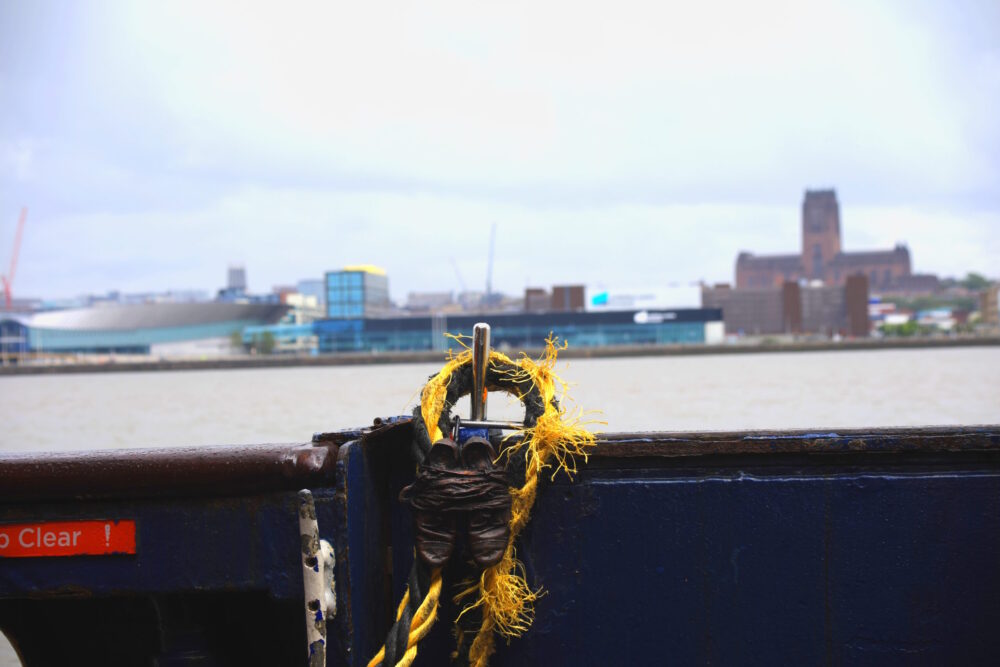
Efforts are ongoing to find a permanent home for the shoes in Liverpool, where they will temporarily be displayed.
The journey began in Strokestown on 19 May and concluded in Liverpool on 27 May.
The walkers passed through Dublin, where they participated in a ceremony at EPIC, the Irish Emigration Museum, before sailing to Holyhead and then traveling by road to Seacombe (Birkenhead).
From there, they took a ferry to the Mersey Port and walked to Clarence Dock Gates and St Luke’s (Bombed Out) Church. Clarence Dock was historically significant as it received 1.3 million Irish Famine refugees during An Gorta Mór. The shoes will be displayed in an exhibition in October.
The walk from Clarence Dock to St Luke’s will be repeated with public participation on 27 October 2024, culminating in an official Irish Famine Memorial event.
Notable attendees will include Martin Fraser, Irish Ambassador to the United Kingdom, and Sarah Mangan, Irish Consul General to the North of England.
The primary goal of the walk is to strengthen the connections between Strokestown, Liverpool, and Canada.
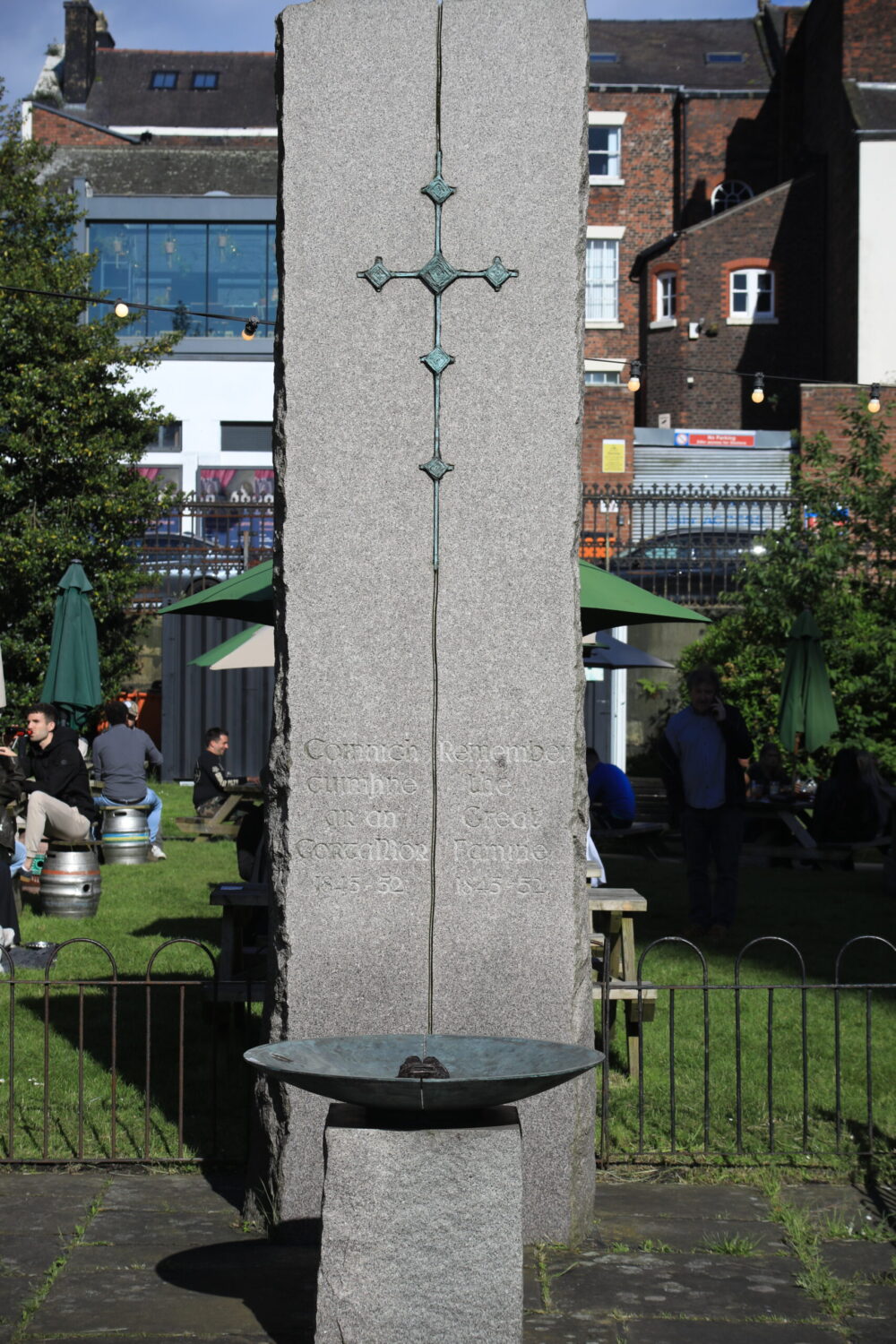
Funds raised will support several key initiatives:
- Forging the bronze shoes creating a tangible heritage reference. These will connect Strokestown, Liverpool and 8+ sites in Canada via the Global Irish Famine Way, which is still growing its international links. This pair will eventually find a permanent home in Liverpool, just as the original migrants did
- Maintaining the existing trail and its heritage, whilst exploring and researching new sites of relevance. As custodians of the Trail, the Festival team are in the process of refreshing the memorial monument and plaques, which have served as a poignant marker since 1998
- Developing technology to enable visitors — local and remote — to explore and understand the importance and relevance of the Irish Famine story to our city and its communities.
Liverpool Irish Festival Artistic Director and CEO, Emma Smith says:
“The walk has been a powerful reminder that famine is not inevitable. The treatment of the 1,490 in the run up to and during 1847 is a blot on the names of all those involved, for they were left with nothing. Famine is not just about food; it’s about how people are subjugated, held in poverty and have all agency removed. For a long time, not even their names were known, deemed as ‘surplus population’.
“The work Strokestown Park is doing to retell their story and understand the political mechanics, which allowed over half of their number to perish, is critical. History cannot be learned from if its stories are forgotten. It’s reminded us that migrancy is not a new concept. Liverpool is a city built by migrants, throughout its history. Playing host to migrants is an important part of our humanity and the societies we build.
“We must remember this in the face of the ongoing international wars, reminding ourselves that displaced people are often the poorest of the poor.
“All those that walked this week did so with great empathy and compassion. It was a tough journey and we’re all incredibly proud to have followed in the footsteps of the 1,490.”










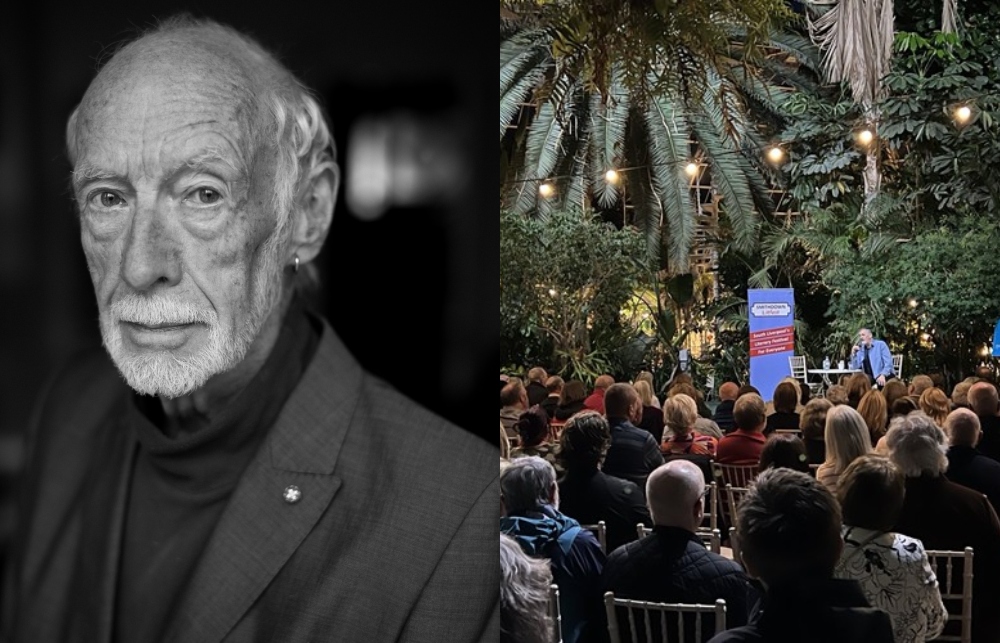
 Subscribe
Subscribe Follow Us
Follow Us Follow Us
Follow Us Follow Us
Follow Us Follow Us
Follow Us











